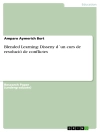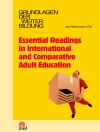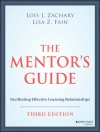This book presents the history of natural history dioramas in museums, their building and science learning aspects, as well as current developments and their place in the visitor experience.
From the early 1900s, with the passage of time and changes in cultural norms in societies, this genre of exhibits evolved in response to the changes in entertainment, expectations and expressed needs of museum visitors. The challenge has always been to provide meaningful, relevant experiences to visitors, and this is still the aim today. Dioramas are also increasingly valued as learning tools. Contributions in this book specifically focus on their educational potential. In practice, dioramas are used by a wide range of educational practitioners to assist learners in developing and understanding specific concepts, such as climate change, evolution or or conservation issues. In this learning process, dioramas not only contribute to scientific understanding and cultural awareness, but also reconnect wide audiences to the natural world and thereby contribute to the well-being of societies.
In the simultaneously published book: “Natural History Dioramas – Traditional Exhibits for Current Educational Themes, Socio-cultural Aspects” the editors focus on socio-cultural issues and the potential of using dioramas to engage various audiences with – and in – contemporary debates and big issues, which society and the natural environment are facing.
表中的内容
Foreword & Introduction, Scheersoi, Annette & Tunnicliffe, Sue Dale.- Section 1. Dioramas as Witnesses of the Past and Evidence of Change.- 1) Origins and Contemporary Status of Habitat Dioramas in the United States, Rogers, Stephen, Shreckengast, Rebecca & Dorfman, Eric.- 2) Developing a Modern Diorama: Changing Habitats in Scotland since the End of the Last Ice Age, Kitchener, Andrew.- 3) Building and Maintaining Dioramas, Granqvist, Eirik.- 4) Dioramas of Marine Bird Colonies: History, Design, and Educational Importance, Hutterer, Rainer & Töpfer, Till.- 5) Botanical Dioramas – just Beautiful?, Grotz, Kathrin.- Section 2. Theoretical Aspects of Learning with Dioramas.- 6) Dioramas as (Scientific) Models in Natural History Museums, Moormann, Alexandra & Bélanger, Charlène.- 7) Educational Mechanisms of Dioramas, May, Michael & Achiam, Marianne.- 8) An Interpretation Model for Dioramas, Mifsud, Edward.- Section 3. Science Learning Activities Involving Dioramas.- 9) Constructing and Reviewing Dioramas: Supporting Beginning Teachers to Think about Their Use to Help Children Understand the Work of Natural History Scientists, Mc Gregor, Debra & Gadd, Jennifer.- 10) Dioramas and Teachers: Looking, Thinking, Drawing, and Talking, Trowbridge, Cristina.- 11) Learning in Physical Science Opportunities at Natural History Dioramas, Tunnicliffe, Sue Dale, Gazey, Rebecca & Gkouskou, Eirini.- 12) Learning Science in the Encounter with Museum Dioramas, Piqueras, Jesús & Hamza, Karim & Edvall, Susanna.- Conclusion - The Use of Natural History Dioramas for Science Education, Reiss, Michael.
关于作者
Annette Scheersoi is a Professor in Biology Education at the University of Bonn,
Germany. Her doctorate was on museum’s exhibition concepts and the use of different
media for communicating biological knowledge. Since 2005 she is a biology teachertrainer
and researcher, first at Frankfurt University, then at the University of Cologne
and now at Bonn’s university. Her research on biology learning focuses on interest
development in out-of-school learning environments. Annette also develops learning
materials for schools as well as for museums, zoos and botanic gardens.
Sue Dale Tunnicliffe is a Reader in Science Education at UCL Institute of
Education, University College London. She holds a bachelors degree from
Westfield College, University of London in Zoology and trained as a secondary
biology teacher at the university’s Institute of Education. After teaching in
grammar schools for a few years she had children and, wanting to find out more
about how young children learnt science, particularly biology, she entered
primary school teaching and is now interested in pre school learning, as well as
animals as exhibits. She set up and ran a new Primary Science and Design
Technology advisory team for London Borough of Richmond and then became
Head of Education at the Zoological Society of London. She has worked at the
BBC and in a cultural museum. Her doctorate was from King’s College,
London ’Talking about animals: conversations of children in zoos, a museum and
a farm”. She has published widely.












